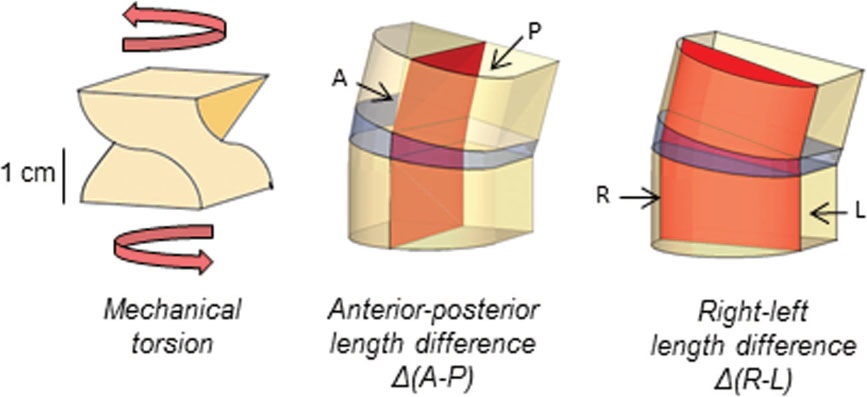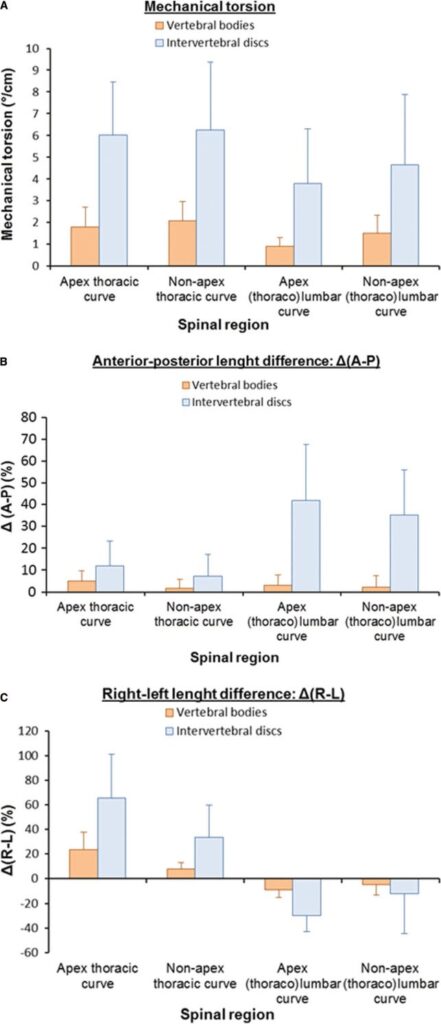I have previously stated that torsion may increase height growth by dynamically altering the fluid movement of bone and thereby enhancing the longitudinal bone growth of bone including bone which is skeletally mature but these papers offer an alternative theory.
The Phylogeny and Ontogeny of Humeral Torsion
“In a series of specimens extending from fossil material through
recent vertebrates including man there occurs a gradual phylogenetic increase
in the degree of humeral torsion. A further (ontogenetic) torsion is superimposed upon the phylogenetic one in man which increases from birth until the proximal epiphysial cartilage of the humerus disappears and bony fusion occurs.
There is a distinct correlation between the calculated strength of humeral rotator muscles inserting above and below the proximal epiphysis; this suggests that they provide the forces involved in the production of humeral torsion. It is shown that ontogenetic or secondary torsion occurs proximally and not along the shaft of the bone.
Differences in the degree of humeral torsion in either sex of adult Whites and Negroes are given and discussed.”
So this paper is basically saying that it’s the muscular rotator cuffs causing the change in humeral torsion and not the fluid mechanics to bone. However, in practice in contrast to this theory it seems that dynamically loaded bones generate more longitudinal bone growth than just people with muscle imbalances. Ultimately, more experimentation would need to be done to see which theory is correct.
“Our phylogenetic survey shows that the torsion angle increases progressively from crossopterygian fishes through recent mammals to man.”
“Mean torsion values proved to be greater in Whites and more marked on the right side, but bilaterally similar in Negroes.”<-the use of the word Negro shows how old this paper is.
“There are distinct correlations between humeral length and thickness. The longer
bone of a pair usually shows the greater torsion angle. However, in Whites, the
thicker bone is more twisted. while the thinner one has more torsion in Negroes.
The right humerus is usually longer in both groups. The average torsion angle is 74 4″ in
Whites and 72.6″ in American Negroes.
It is suggested that the differences in torsion and thickness of right humeri may be attributable to the predominance of right handedness in the population (about 95% on the right).”
“muscular forces produced humeral torsion at the level of the proximal epiphysial cartilage prior to bony fusion at that level.“
“(a) torsion, indeed, occurs at the proximal epiphysial plate of the humerus, (b) the forces involved are attributable to lateral rotator muscles inserting proximal to the epiphysial line of the humerus and to medial rotators which insert distal to it (I found no evidence that torsion occurs along the humeral shaft); and
(c) my studies of humeri of subjects of known age showed that torsion ceases with the disappearance of the proximal epiphysial cartilage.”<-the problem with this is is that most people do not do dynamic torsional training.
“I found a strong correlation between the degree of torsion and the strength of medial and lateral humeral rotators”
So basically muscular imbalances are what generates torsion in the humerus. So theoretically people who only train bench press pre-skeletal maturity should have more rotated humeri than individuals who engage in more balanced movements. The problem with this theory is that it only looked at small subset of cadavers and most people do not do dynamic torsional activities.
Here’s a more recent study:
Humeral Torsion Revisited: A Functional and Ontogenetic Model for Populational Variation
“Anthropological interest in humeral torsion has a long history, and several functional explanations
for observed variation in the orientation of the humeral head have been proposed. Recent clinical studies have revived this topic by linking patterns of humeral torsion to habitual activities such as overhand throwing. However, the precise functional implications and ontogenetic history of humeral torsion remain unclear. This study examines the ontogeny of humeral torsion in a
large sample of primarily immature remains from six different skeletal collections. The results of this research confirm that humeral torsion displays consistent developmental variation within all populations of growing children; neonates display relatively posteriorly oriented humeral heads, and the level of torsion declines steadily into adulthood. As in adults, variation in the angle of humeral torsion in immature individuals varies by population, and these differences arise early in development. However, when examined in the context of the developing muscles of the shoulder complex, it becomes apparent that variation in the angle of humeral torsion is not necessarily related to specific habitual activities. Variability in this feature is more likely caused by a generalized functional imbalance between muscles of medial and lateral rotation that can be produced by a wide variety of upper limb activity patterns during growth.”
So this more recent paper is saying that torsion is produced by muscular imbalance and not dynamic torsional loads.
“While the association of humeral torsion with a specific habitual activity is suggestive of an underlying functional cause for this morphological pattern, it does not entirely clarify the precise biomechanical and muscular forces acting during ontogeny that produce variation in this feature.”
“humeral torsion was initiated by embryological rotation of the forearm,”
“Several studies have found that, in contrast to nonthrowing control groups, individuals who engage in overhand throwing activity during adolescence and young adulthood display high levels of bilateral asymmetry in their angle of humeral torsion, with the dominant throwing arm possessing a more posteriorly oriented humeral head“
“the difference in humeral torsion between the dominant throwing and contralateral arms in professional handball players averaged 9.48, with a side-to-side difference of up to 298. In contrast, no statistically significant differences were found between right and left arms in the nonthrowing control groups”<-this suggests a functional fluid based mechanism for humeral torsion and therefore the possibility that torsion can induce morphological changes in the bone.
“medieval populations known to be engaging in strenuous weapons training might display similar changes in humeral architecture.”<-but apparently they did not. But that could just mean they did meet the threshold.
“Humeral torsion decreases with age, with infants between birth and 2 years postnatal displaying the highest values”
“While humeral torsion does decrease by 258 from birth to adulthood, it is difficult to determine when adult levels of torsion are attained.”
“Levels of humeral torsion are generally elevated in the populations predicted to be participating in high levels of strenuous activity and lower in less active, more urban groups.”
“In the normal individual, balanced forces of medial and lateral rotators produce a modest degree of humeral torsion. In the individual with a functional imbalance, unopposed forces of medial rotators results in a more posterior orientation of the humeral head.”
“professional throwing athletes experience the same imbalance of medial and lateral
rotators that are characteristic of individuals with obstetric brachial plexus injuries. In this case, however, this imbalance seems to be a product of a slight reduction in the power of the muscles of lateral rotation in combination with a dramatic increase in the power of muscles in medial rotation. In comparison to nonthrowing controls, throwing athletes display relatively stronger muscles of medial rotation”<-I just don’t see throwing creating a sufficient muscle imbalance to cause torsion. I think dynamic loading is more likely.
There’s really not much to say which theory is correct(dynamic torsional loading produces changes in bone architecture versus muscle imbalance produces pull on the growth plate) other than more exprimentation.





